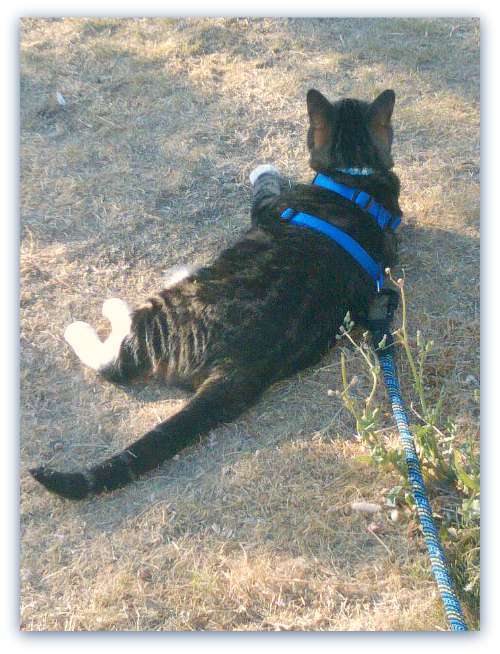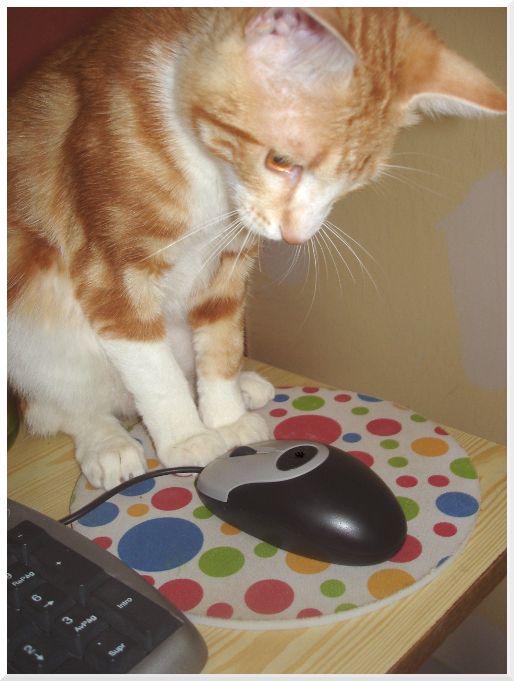Caring for your Feline Senior Citizen
Share

 As your cat approaches their senior years, some simple changes in care can make all the difference in quality of life. Make sure your feline senior citizen feel your love by following these tips.
As your cat approaches their senior years, some simple changes in care can make all the difference in quality of life. Make sure your feline senior citizen feel your love by following these tips.
There comes a time when it becomes clear that your kitty is no longer a young cat. Caring for your feline senior citizen takes a little more consideration for aging bones and fading senses.
[heading style=”3″ color=”#ff9933″ style_color=”#ff9933″]Feeding[/heading]
Take a look in the cat food section of any pet store and you’ll see foods intended for all stages of a cat’s life, from kittenhood through young adulthood through to old age. Generally speaking, food for cats over seven years old is labeled as “mature,” for cats over eleven or twelve years of age is labeled as “senior,” and specialty food for cats over fifteen or so is labeled as “geriatric.”
According to a study in 2010 (Hutchinson and Freeman, 2010), there hasn’t been any real scientific proof behind the differences in these foods. That said, there’s no harm in using them, particularly if your vet recommends one for some reason. There are a number of health issues which can crop up in an elderly cat for which a change in diet is indicated. Diabetes and kidney diseases are the most obvious.
Also, be aware that weight-loss can creep up on an older cat, around the age of twelve or thirteen. It might also show up as a combination of loss of muscle-tone with a gain in fat. If this happens in your cat, a trip to the vet is important to rule out some health problems.
Because cats use smell to determine what is good to eat, it can be trickier to convince a cat to eat enough when their sense of smell starts to fade. That alone can lead to weight-loss.
[load_module id=”582″]
Encourage the cat to eat by adding strong-smelling meat gravy, warmed beef baby food, or a very no-salt/low sodium broth. Heating canned catfood to body temperature may also encourage a cat to eat.
[heading style=”3″ color=”#ff9933″ style_color=”#ff9933″]Water[/heading]
Senior kitties often don’t drink enough water to stay healthy. Because even a healthy cat’s kidneys deteriorate as they age, keeping well hydrated is especially important for the older cat.
Encourage your cat to drink more by putting low bowls of water in several locations around the home, so the kitty doesn’t need to walk very far to nab a drink. Drinking fountains designed for cats might also entice your cat to drink more often. Fountains are particularly inviting for Bengals, Siamese, and similar breeds.
Also, consider adding some meals of canned cat food, if you normally feed kibble. Canned cat food has extra moisture which will help with overall hydration.
[heading style=”3″ color=”#ff9933″ style_color=”#ff9933″]Grooming[/heading]
Some elderly cats have trouble grooming themselves properly. Arthritis interferes with their flexibility, and they don’t process hairballs as easily as when they were younger.
Gentle brushing will help your cat stay healthier and maintain a good self-image. Be on guard against mats in the fur. Mats are painful because they pull on the skin, and they tend to turn up on parts of the body that move around, such as the armpits and the hips. If you catch a mat early enough, it can be teased out with a comb. Otherwise, slide a comb under the mat and snip it off. Sliding the comb under the mat helps t prevent accidentally cutting the cat.
Long-haired cats often benefit from some fur trimming around their hind ends, to keep their droppings from becoming stuck. In fact, some long-haired cats benefit from being trimmed all over, a couple times a year.
[heading style=”3″ color=”#ff9933″ style_color=”#ff9933″]Comfort[/heading]
Older cats appreciate more warmth and soft places to sleep. In cooler areas and air-conditioned homes, a feline senior citizen will welcome a heated bed and extra blankets.
You’ll probably also notice that your kitty wants more attention from you, as time goes on. Give some extra scratches and laptime to ensure your cat feels loved.
[heading style=”3″ color=”#ff9933″ style_color=”#ff9933″]Convenience[/heading]
 Most senior kitties lose their agility as they get older.
Most senior kitties lose their agility as they get older.
If you’ve been feeding your cat on a counter or bookshelf, to keep the dog out of the cat food, consider putting the food on the floor and using a baby gate to keep the dog away.
Take a look at the height of the litter box. Is the cat starting to have trouble stepping in and out of it? It might be time to look at shorter boxes.
Can your kitty still reach the usual napping places? It may be necessary to lower the cat bed, or to add pet-stairs to make a favorite napping spot easier to reach. A wider cat-shelf on a window will also be appreciated. Cat-shelves for windows are easily available, and almost as easily improvised, in both temporary and permanent fixtures.
[heading style=”3″ color=”#ff9933″ style_color=”#ff9933″]Medical Checks[/heading]Wellness checks are becoming more important again, in the senior years. If everything seems to be running smoothly, a check once every six months is good. If you notice any signs of pain or sickness, of course, take your cat in to the clinic. Some of the illnesses associated with old age can be treated and managed over the long term.
Discuss vaccinations with your vet at one of these wellness checks. A senior indoor cat may not need all of the vaccinations as frequently as a younger cat or an outdoor kitty. It will depend on the circumstances of your specific household.
[load_module id=”210″][heading style=”3″ color=”#ff9933″ style_color=”#ff9933″]Next Steps[/heading]
Is your cat overdue for a trip to the vet? If it’s been more than six months, make an appointment for a wellness check.
Take a look around your home at your cat’s furnishings. Are they still appropriate and comfortable, now that your kitty is starting to slow down a bit? It might be time to phase in some new pieces, for your cat’s comfort.
About the Author
With 7 years of small animal practice, Dr. Eloise Bright came to Love That Pet with as animal lover and advocate for all animals from baby birds to stray kittens. With two sons in tow, Eloise mainly practices in Sydney, Australia. Chat with her and the dog, Duster and cat, Jimmy on Google+.










